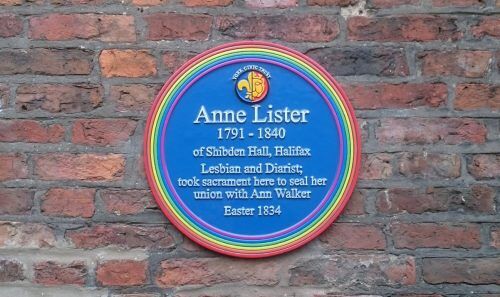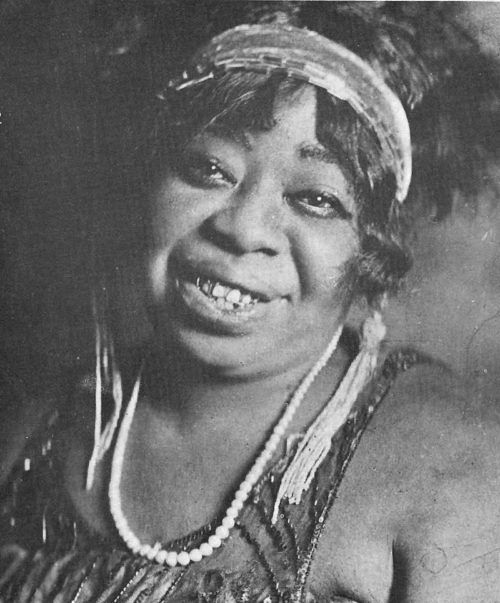This week is Lesbian Visibility Week, which raises awareness about the issues facing lesbians and celebrates their achievements. We’ll be publishing articles throughout the week to bring more attention to the people who put the “L” in LGBTQ Nation.
What better time for a history lesson than Lesbian Visibility Week, right?
Knowing your LGBTQ+ history is not only important, but it can provide great comfort and reassurance for members of the community. What’s more, it opens our eyes to the fact that, yes, queer really has always been here!
Related:
This Week in LGBTQ Twitter: Lesbian Visibility Week brings out the TERFs
And Chelsea Manning throws shade at Elon Musk.
In honor of Lesbian Visibility Week, we thought we’d educate you on some key moments in lesbian history, from the first arrest for lesbian activity to the first televised kiss between two women.
Never Miss a Beat
Subscribe to our newsletter to stay ahead of the latest LGBTQ+ political news and insights.
The first conviction for lesbian activity
We’re starting off by throwing it all the way back to the 1600s.
In March 1649, there was the first known conviction for lesbian activity in North America.
Sarah White Norman and Mary Vincent Hammon were charged with “lewd behavior with each other upon a bed” in Plymouth, Massachusetts.
Hammon was under 16 and not prosecuted.
The first lesbian marriage

Same-sex marriage wasn’t legalized in the United States until 2015, but that didn’t doesn’t mean lesbian weddings only started happening then.
In fact, the very first marriage between two women actually happened in the 1800s.
Anne Lister (whose name you might recognize from the HBO series Gentleman Jack) was dubbed “the first modern lesbian,” and she married Ann Walker at Holy Trinity Church, Goodramgate, York in 1834.
Of course, their union was without legal recognition, given that same-sex marriage was only legalized in the U.K. in 2014. However, they took communion together on Easter Sunday and thereafter considered themselves married.
In years since, the church has been described as “an icon for what is interpreted as the site of the first lesbian marriage to be held in Britain,” and the building now hosts a commemorative blue plaque in their honor.
The word “lesbian” is used
The word “lesbian” is part of many people’s everyday vocabulary now, but do you know when it was first used?
Well, the word “lesbianism” to describe erotic relationships between women had been documented way back in 1732.
The term was first used by William King in his book, The Toast, published in England, which meant women who loved women.
The book has become notable for providing proof that the term “lesbians” was used in a sexual sense as early as the 1700s, in exactly the same way that it is used today.
Before this, the word lesbian meant “of Lesbos”, such as “Lesbian wine” or “Lesbian culture.”
The term “lesbian” is used in a medical dictionary
Then, in 1890, the term lesbian was used in a medical dictionary as an adjective to describe tribadism (as “lesbian love”).
The terms lesbian, invert, and homosexual were then interchangeable with sapphist and sapphism around the turn of the 20th century.
Arrest for lesbian partying

Singer Ma Rainey – the so-called Mother of the Blues – was arrested in her house in Harlem for having a lesbian party in 1925.
Her protégé, Bessie Smith, bailed her out of jail the following morning.
Both Rainey and Smith were part of an extensive circle of lesbian and bisexual African‐American women in Harlem, and the Blues scene of the Harlem Renaissance provided Black women with a space to explore their sexuality and gender. It gave them the freedom to be themselves without the white supremacist gaze, which sexualized and criminalized Black women.
Rainey wrote about speculation regarding her sexuality three years later in the song “Prove it On Me Blues,” with lyrics including: “Ain’t nobody caught me, you sure got to prove it on me.”
Publication of a groundbreaking lesbian novel
In 1928, English author Radclyffe Hall published what many consider today a groundbreaking lesbian novel, The Well of Loneliness. It follows the life of Stephen Gordon, an Englishwoman from an upper-class family whose “sexual inversion” is apparent from an early age.
The book’s release caused the topic of homosexuality to be a topic of public conversation in both the United States and England.
The formation of the first known lesbian rights organization
In September 1955, the first known lesbian rights organization in the United States was formed in San Francisco.
Daughters of Bilitis (DOB) hosted private social functions until it was dissolved in 1995. It was conceived as a social alternative to lesbian bars and clubs, which were subject to raids and police harassment, as well as general discrimination.
Throughout its 14 years, Daughters of Bilitis became an educational resource for lesbians, gay men, researchers, and mental health professionals.
Related:
Coming out from behind the lens: How one lesbian’s photos captured the rise of gay rights
Kay Lahusen was the first photojournalist of the LGBTQ movement and she helped to document the earliest protests for homosexual rights.
L.A. Law aired the first televised lesbian kiss
While representation is well on its way now, there was a time when TV shows didn’t want to touch lesbianism with a bargepole, making the first on-screen kiss between two women all the more monumental.
Although it might surprise you to learn that it wasn’t until the nineties that two women first locked lips on American TV.
The kiss in question aired in a 1990 episode of 21 Jump Street, but the camera cut off their actual lips, meaning the actual kiss wasn’t really shown at all.
So, unofficially, the first lesbian kiss on TV is often attributed to a 1991 episode of legal drama L.A. Law, in which bisexual lawyer C.J. briefly kissed her female colleague Abby Perkins on the lips.
Sadly, romance never blossomed between the two characters, as Abby left the show and C.J ended up with a boyfriend, not to mention the network received major backlash for the scene.
Still, we’ve come a long way.
Audre Lorde is named State Poet of New York

In 1991, self-described “Black, lesbian, mother, warrior, poet,” Audre Lorde became the State Poet of New York. She dedicated both her life and her creative talent to confronting and addressing various injustices, whether it be classism, homophobia, racism, or sexism.
The critically acclaimed novelist, poet, and essayist was also a co-founder of The Kitchen Table Women of Color Press, and an editor of the lesbian journal Chrysalis.
Ellen DeGeneres comes out
In April 1997, comedian Ellen DeGeneres came out as a lesbian on the cover of Time magazine, stating: “Yep, I’m Gay.”
The cover coincided with the broadcast of “The Puppy Episode,” a two-part episode of the American situation comedy series Ellen.
The episode details lead character Ellen Morgan’s realization that she is a lesbian and her coming out, with the title initially used as a code name for Ellen’s coming out so as to keep the episode under wraps.
To say the moment was groundbreaking for lesbian history would probably be an understatement, as not only did it win multiple awards, Ellen became a cultural icon. DeGeneres’s career, though, suffered as the network stopped promoting her sitcom until it was ultimately canceled.
Related:
Ellen ends her 19-year talk show by showing how far LGBTQ equality has come
“Twenty-five years ago they canceled my sitcom because they didn’t want a lesbian to be in primetime once a week. And I said, ‘OK, then I’ll be on daytime every day. How about that?'”
First lesbian elected to Congress

In 1998, aged 24, Tammy Baldwin became the first openly lesbian candidate ever elected to Congress, winning Wisconsin’s Second Congressional District seat over Josephine Musser.
The Democrat was also the first woman elected to either chamber in Wisconsin.
Then in 2012, she made history as the first LGBTQ+ person elected to the Senate.
Publication of When We Were Outlaws: a Memoir of Love and Revolution
Written by Jeanne Cordova, When We Were Outlaws was published in 2011.
The radical lesbian activist and pioneer’s memoir offers a raw and intimate insight into the life of a young activist torn between conflicting personal longings and political goals, at a time when the fight for gay rights and liberation for women was still fresh.
Today, When Were Outlaws is still considered extraordinary.
Lesbian history is still in the making
Looking back at these groundbreaking moments in lesbian history, we can see how far the LGBTQ+ community has come in the fight for equality and acceptance. However, we must also acknowledge that lesbian history is still in the making.
There is still much work to be done in terms of combating discrimination and bigotry and ensuring that all members of the community are treated with dignity and respect.
Let us honor the brave pioneers who paved the way for us and continue to fight for a better future for all members of the LGBTQ+ community.
By subscribing to the LGBTQ Nation newsletter, we can stay informed and engaged with the ongoing struggle for LGBTQ+ rights and contribute to the ongoing progress towards a more just and equitable society.
Don't forget to share:


















